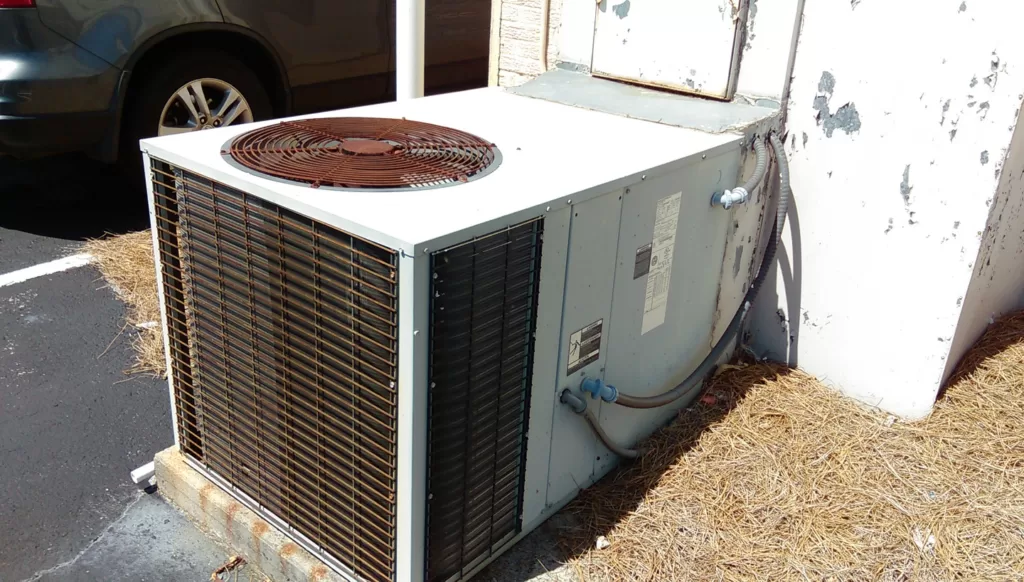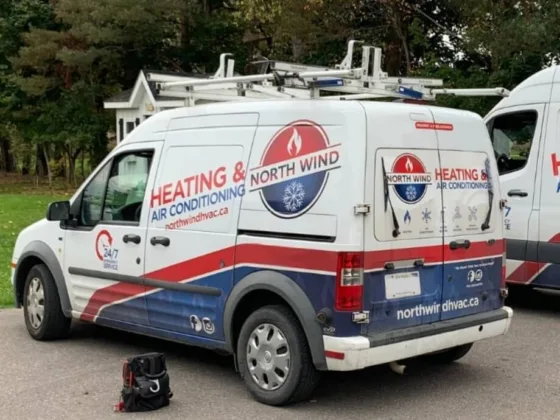We’re excited to present an article exploring the latest HVAC trends and innovations.
From smart thermostats and home automation to energy efficiency and sustainable solutions, we’ll delve into the advancements shaping the industry.
We’ll also discuss indoor air quality and filtration systems, the integration of renewable energy sources, and the future of HVAC with artificial intelligence and machine learning.

This blog post on the latest HVAC trends and innovations is brought to you by ALP Heating. If you have any questions about upgrading your own system, please don’t hesitate to contact the experts at ALP Heating today!
Smart Thermostats and Home Automation
Smart thermostats are becoming increasingly popular in homes due to their ability to automate and optimize temperature control. These innovative devices offer a range of energy-saving features, making them an attractive option for homeowners looking to reduce their energy consumption.
With voice-controlled automation, users can easily adjust the temperature settings with just a simple voice command, providing a convenient and hands-free experience. Moreover, geolocation-based temperature control allows the thermostat to adjust the temperature based on the user’s location, ensuring optimal comfort and energy efficiency.
Remote monitoring and control features enable users to access and control their thermostats from anywhere, providing convenience and flexibility. Additionally, smart scheduling and adaptive learning capabilities allow the thermostat to learn the user’s preferences and adjust the temperature accordingly, promoting energy efficiency and comfort.
Overall, smart thermostats offer a range of features that enhance energy savings and provide a more convenient and efficient home heating and cooling experience.
Energy Efficiency and Sustainable Solutions
One way to reduce energy consumption and promote sustainability is by using efficient HVAC systems. Energy-saving technologies, green building solutions, sustainable HVAC practices, energy management strategies, and eco-friendly cooling and heating options all contribute to more sustainable and energy-efficient HVAC systems.
By incorporating these practices and technologies, we can not only reduce our environmental impact but also save on energy costs. Energy-saving technologies such as variable speed motors, smart thermostats, and energy recovery ventilation systems help optimize energy usage and improve efficiency.
Green building solutions such as proper insulation and air sealing ensure that HVAC systems operate at their best. Sustainable HVAC practices like regular maintenance and proper system sizing also contribute to energy efficiency.
Indoor Air Quality and Filtration Systems
To improve indoor air quality, it’s important to invest in efficient filtration systems. These systems play a crucial role in removing airborne contaminants and pollutants from the air, ensuring that we breathe clean and healthy air.
Regular HVAC maintenance and cleaning also contribute to maintaining good indoor air quality. By keeping our heating, ventilation, and air conditioning systems clean, we can prevent the buildup of dust, mold, and other pollutants that can negatively impact our health.
The health benefits of clean indoor air are numerous, including reduced respiratory issues, allergies, and asthma attacks.
Proper ventilation is another key factor in maintaining good indoor air quality. It helps to circulate fresh air and remove stale air, preventing the buildup of pollutants.
Additionally, indoor air quality testing and monitoring can provide valuable insights into the current air quality and help identify any potential issues or areas that need improvement.
Integration of Renewable Energy Sources
The integration of renewable energy sources is crucial for reducing our reliance on fossil fuels and mitigating the impacts of climate change. In order to achieve a sustainable future, we need to explore various options for renewable energy integration.
One of the most promising sources is solar integration. Harnessing the power of the sun, solar panels can convert sunlight into electricity, providing a clean and abundant source of energy.
Another viable option is wind integration. Wind turbines can capture the kinetic energy of the wind and convert it into electricity.
Additionally, geothermal options, such as tapping into the Earth’s heat, can provide a reliable source of energy. Biomass utilization, where organic materials are converted into energy, and hydroelectric possibilities, which harness the power of flowing water, are also important considerations for renewable energy integration.
Advances in HVAC System Design and Efficiency
You can benefit from exploring recent advances in HVAC system design and efficiency. HVAC system optimization, smart zoning, geothermal heating, hybrid heating systems, and energy recovery ventilation are some of the key keywords in this subtopic.
Read Also :
With HVAC system optimization, you can maximize the performance and energy efficiency of your system by fine-tuning its components and settings.
Smart zoning allows you to control the temperature in different areas of your home independently, saving energy and increasing comfort.
Geothermal heating utilizes the earth’s natural heat to warm your home, providing a sustainable and cost-effective solution.
Hybrid heating systems combine the benefits of different heating sources, such as gas and electricity, to optimize efficiency and reduce energy consumption.
Lastly, energy recovery ventilation helps to improve indoor air quality while minimizing energy loss by exchanging heat between incoming and outgoing air streams.
Internet of Things (IoT) and Connected HVAC Systems
Connected HVAC systems, enabled by the Internet of Things (IoT), allow for remote monitoring and control of your home’s temperature and energy usage. These smart buildings utilize innovative technology to optimize energy management and improve overall efficiency.
With remote monitoring, homeowners can easily access real-time data on their HVAC system’s performance, enabling them to make informed decisions and adjustments. Predictive maintenance is another key feature of connected HVAC systems, as data analytics can identify potential issues before they become major problems. By proactively addressing maintenance needs, homeowners can avoid costly repairs and ensure their HVAC system operates at peak performance.
With the integration of IoT and connected HVAC systems, energy consumption can be monitored and optimized, leading to significant cost savings and a reduced carbon footprint.
The Future of HVAC: Artificial Intelligence and Machine Learning
Using artificial intelligence and machine learning, future HVAC systems will be able to analyze data and make intelligent adjustments to optimize energy efficiency and comfort levels. AI-powered diagnostics will enable these systems to detect and diagnose issues in real time, allowing for quicker and more accurate repairs.
Predictive maintenance algorithms will be able to anticipate when components are likely to fail and schedule maintenance before any problems occur. This will not only save time and money but also prevent unexpected breakdowns.
Energy optimization will be achieved through advanced algorithms that can analyze energy consumption patterns and recommend adjustments to optimize efficiency. Personalized comfort will be a key feature, as HVAC systems will be able to learn individual preferences and adjust temperature and airflow accordingly.
Remote monitoring will allow users to control and monitor their HVAC systems from anywhere, ensuring comfort and efficiency even when away from home.
Frequently Asked Questions
How do smart thermostats and home automation systems improve energy savings and comfort in residential buildings?
Smart thermostats and home automation systems improve energy savings and comfort in residential buildings through energy-efficient appliances, smart home integration, programmable thermostats, energy monitoring systems, and zone heating and cooling.
What are some sustainable solutions that can be integrated into HVAC systems to reduce energy consumption and environmental impact?
Some sustainable solutions to reduce energy consumption and environmental impact in HVAC systems include incorporating geothermal heating, energy-efficient insulation, variable refrigerant flow, smart ventilation, and passive cooling techniques.
How do indoor air quality and filtration systems contribute to a healthier and more comfortable indoor environment?
Air purification and filtration technology in ventilation systems improve indoor air quality by removing pollutants and allergens. Proper air circulation ensures a healthier and more comfortable environment, reducing allergies and promoting overall well-being.
What are the benefits and challenges of integrating renewable energy sources, such as solar or wind power, into HVAC systems?
Integrating renewable energy sources, like solar or wind power, into HVAC systems offers numerous benefits, including reduced energy costs and environmental impact. However, challenges such as initial investment and system compatibility need to be addressed for successful integration.
How have advances in HVAC system design and efficiency improved energy savings and overall performance?
Advances in HVAC system design and efficiency have greatly improved energy savings and overall performance. Energy-saving technologies, performance optimization, and design advancements have led to significant reductions in energy consumption and increased efficiency.
Conclusion
Overall, it’s clear that HVAC trends and innovations are revolutionizing the way we control and manage our indoor environments.
From smart thermostats and home automation to energy-efficient solutions and improved air quality, these advancements are making our lives more comfortable and sustainable.
With the integration of renewable energy sources and the emergence of IoT and connected systems, HVAC technology is only going to get smarter and more efficient.
As we look to the future, the potential of artificial intelligence and machine learning in HVAC systems is truly exciting.
We can expect great things to come in the world of HVAC.









